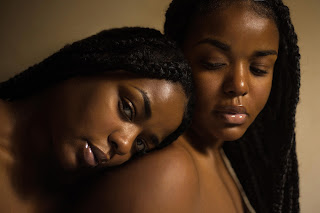by Gina Brennan
The fashion industry is one that relies on foreseeing the future. From guessing what customers want to see on mannequins to predicting the major trends of the season, fashion aspires to reflect the future of society.
By now, we all know the importance of bringing diversity to the forefront of the industry - everyone deserves to see themselves reflected on runways and billboards.
But we must understand that there is another, less overt, reason to have fashion lead the way in diversity; its unique mission is to showcase the future of the fashion runway. With runways watched by people across the world, they truly have the power to shape the diversity of the future.
In its quest to reflect our future, the fashion industry also moulds it.
Munroe Bergdorf, model, trans rights activist, author, and contributing editor of Vogue, sums this phenomenon up perfectly: “Fashion is more than escapism or fantasy. Fashion can quite literally act as a portal to the future that we want to see and a window for others to bear witness to realities, perspectives and identities that are so often overlooked or actively ignored. To me, fashion is a reminder of what possibilities may lie ahead for us, especially those of us of marginalised experiences.”
As a simple example, the promotion of models such as Kate Moss and Jaime King in the ‘90s moulded the rise of ‘heroin chic’, and placed the skinny body in the centre of society’s future in a departure from the athletic models of the ‘80s. However, the responsibility of the industry does not simply begin and end at pushing certain styles and body shapes into our future.
In the present day, the fashion industry is still centre stage in predicting and creating how society will look in the future. People are made comfortable with the future that is shown on runways, they see this future being celebrated, and that is how the future ultimately transpires.
In this way, diversity in fashion is not just important as a portrayal of the people in current society, but a vital window through which we see the society of the future. With the rising conversations about social justice movements, it has become increasingly important that the industry uses this window to highlight minorities.
To do this, it must uplift and make visible members of these minorities so that their audience can see these issues as integral, as much as the clothes on our backs are.
And to discuss social politics within a collection is a powerful tool. See Vivienne Westwood’s impact.
Fashion has the opportunity to especially lead in the visibility of trans people. Trans people are facing unprecedented hostility, from not only many of the general public but the government itself. In a time when the community is under vicious attack, it is important to see them not just for general representation but to create familiarity.
If the industry presents trans models on runways, it will lead society to understand and celebrate the fact that trans people are an innate part of our future. By increasing exposure, we can slowly be removing the stigma.
The models we see on runways and in magazines are changing - right now, there are more models of colour, trans models, disabled models, and plus-size models than we have ever seen before. British Vogue’s April cover starring Precious Lee, Paloma Elsesser and Jill Kortleve is a key example of this shift - no longer are we confined to seeing whiteness and thinness as the example of femininity and fashion.
Fashion strives to predict and has the power to create a future where everyone is included, respected, and beautiful.
While this work should not be discounted, the importance of intersectionality cannot be overlooked.
It’s not enough to have a diverse cast of models - each must be considered in the context of the minority groups they belong to. Models of colour are expected to model nude more often than white models - in this way, the fashion industry leans into historically rooted racist stereotypes and reflects them into society, encouraging white members of the public to view people of colour as inherently more sexual.
This has the potential to shape a future where white people are comfortable viewing people of colour in this sexual context, but not elsewhere. This is again true when it comes to trans models; while posing naked is greatly empowering for some, this is a group that is already heavily fetishised in society. The fashion industry must work to ensure it does not create these hostile futures or feed into scary and dangerous tropes as a result of tick-box diversity features.
In a similar vein, when models of colour are present there is often rampant colourism. Lightskin or white-passing models are highly favoured over dark skin models - allowing brands to gain praise for diversity whilst remaining inoffensive and palatable to a white audience.
However, to create an accurate picture of the future and the present, as the industry strives to do, we must include every group of people.
The fashion industry does not just strive to reflect society, it causes society to reflect it.
Representation is no longer just a means to a depiction of current society but is a glimpse of where we go from here.




